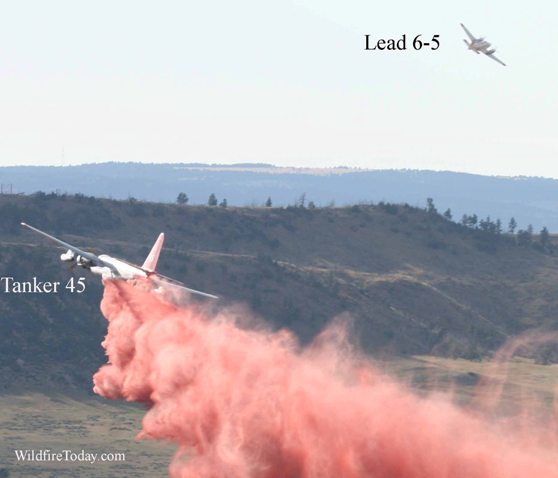Wildfires may redistribute radioactive fallout debris
The NuclearCRIMES.org web site has posted a document that contains information about how radioactive fallout debris from nuclear bomb testing and the meltdown of the Chernobyl nuclear power plant can be transported initially to remote locations, and years later be re-suspended into the air during a wildfire.
Here is an excerpt from the site:
Over the past two weeks, a Chernobyl Reloaded has been in the making, thanks to wildfires that are breaking out in parts of Russia that received some of the greatest deposition levels from Chernobyl fallout. Long-lived radioactive isotopes, such as Cesium-137 and Strontium-90, which are deposited from fallout events such as nuclear weapons tests and large-scale radiological accidents, tend to reside in the top few inches of the soil and also become lodged in vegetation and dead biomass. Hot burning wildfires – such as a record-breaking, large wildfire in 2007 that lifted legacy fallout radiation north of Milford, Utah – can suspend back into the air up to 100% of this lingering radioactivity where winds can carry these carcinogens.
Followup on the lead plane photos
After we posted photos of lead plane 6-5 on July 19 and July 26, we received a message from Jonas Doherty, who provided some interesting details about the photos. Here is an excerpt:
I was the pilot flying the lead plane when you took those pictures. What makes it better is the fact that that actual mission was my final evaluation flight in order to become fully qualified for the lead plane mission. I have been training for the past 1.5 years, the final checkride consisted of 9 seperate missions over the course of a week, the whoopup being the last. It means so much to me to have the article that you wrote as a memory of that day. Your pictures are incredible, and I would love to see more if you would be gracious enough to share them with me.
Just a couple things to clarify regarding the article (as though they matter.) We were actually dispatched out of Silver City, NM. Also, the 5 aircraft that the BLM operates have smoke, but none of the 14 USFS aircraft have it…yet, that is.

We also heard from Chuck Greenwood, the owner of the Greenwood Group, who told us that his company has the contract to supply the lead planes for the U.S. Forest Service. The pilots are USFS employees.
Eagle fire: activity “minimal”
The Eagle fire burning between Warner Springs and Borrego Springs in southern California, has slowed. At the end of the day on Wednesday, CalFire called fire activity on the fire “minimal”. As of Thursday morning it has burned 14,100 acres and has 20 helicopters and over 2,000 personnel assigned. Fire investigators determined that the cause of the fire was arson.
DC-10 worked the Eagle fire on Wednesday
CalFire activated one of the DC-10 air tankers for the Eagle fire in southern California yesterday. Air Tanker 910 flew 5 sorties and dropped 58,000 gallons of retardant on Wednesday.
Rick Hatton, the CEO and President of the company that operates the DC-10’s, 10 Tanker Air Carrier, told Wildfire Today that the aircraft was activated by CalFire on a 5-day Call When Needed (CWN) contract which specifies that any activation will be for a 5-day minimum. The USFS would not allow any minimum number of hours or days in their CWN contract with the company, so the agency apparently expects to use it for one drop, or more, and then shut it down. Mr. Hatton said it will be difficult to continue to operate their two DC-10 air tankers if they are only occasionally used on fires. They are single-purpose aircraft and can’t be diverted like helicopters can to other uses such as law enforcement or news.
Mr. Hatton said that yesterday tanker 910 refilled at Victorville airport, even though CalFire removed all of their property from the reload base on June 30. What remained was the actual reloading equipment, the tanks, mixing equipment, piping, and hoses, which belong to Phos-Chek. Personnel were dispatched to operate it, and they reloaded the tanker five times on Wednesday, each time with 11,600 gallons of Phos-Chek.

CalFire reportedly likes to use the DC-10’s on fires, but the state’s budget problems required that they make $34 million worth of reductions in their fire program this year, including:
- 730 fewer seasonal firefighters
- Reducing the staffing on engines from four to three
- Cancellation of the exclusive use contract for the DC-10 air tanker







